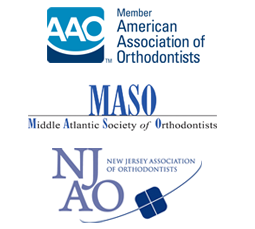Dental Update
Call Giegerich Orthodontics at 609.652.1900 or fill out our online Request an Appointment form to schedule a complimentary consultation with us.
What Is Hyperdontia?
Do you have an excess number of teeth? Because if you do, you have a condition known as hyperdontia. The standard total is 20 primary teeth and 32 permanent teeth.
To distinguish between the two, your primary teeth are those that emerge between the ages of 0 and 36 months. In many cases, these teeth are shed at around 12 years old. On the other hand, permanent teeth are those that replace your primary teeth. These teeth usually have erupted fully by the age of 21.
People who have in excess of 20 primary teeth or 32 permanent teeth are deemed to have hyperdontia. These additional teeth are called supernumerary teeth.
Supernumerary teeth often grow in the dental arch area. They usually erupt in maxillary, or upper, arch in the form of incisors. Next to incisors, molars are the second-most common form in supernumerary tooth growth. In molars, they appear as impacted wisdom teeth. These extra incisors and molars have names: Incisors are referred to as mesiodens and molars are called distodens or distomolars.
Around 1 percent to 4 percent of the population experience hyperdontia. In addition, men are twice as likely to have this condition as women. Although it rarely happens, there can be as many as 30 supernumerary teeth in an individual. The majority of hyperdontia cases are limited to only one extra tooth growth.
Hyperdontia is associated with a variety of conditions such as Ehler-Danlos syndrome, cleidocranial dysplasia, cleft lip and palate and Gardner syndrome.
Experts, however, are not sure yet what causes the growth of extra teeth. Many of them believe it could be congenital. Other causes include environmental factors and overactive tooth development.
When supernumerary teeth emerge, they can pose functional and esthetic problems. Thus, it is highly recommended to detect, evaluate and remove them, if necessary. If retained, these extra teeth can cause clinical problems such as delay in the growth of the adjacent teeth or development of tumors and cysts.
Archive
- 2013-03-21
- 2013-04-21
- 2013-05-21
- 2013-06-21
- 2013-07-21
- 2013-08-21
- 2013-09-21
- 2013-10-21
- 2013-11-21
- 2013-12-21
- 2014-01-21
- 2014-02-21
- 2014-03-21
- 2014-04-21
- 2014-05-21
- 2014-06-21
- 2014-07-21
- 2014-08-21
- 2014-09-21
- 2014-10-21
- 2014-11-21
- 2014-12-21
- 2015-01-21
- 2015-02-21
- 2015-03-21
- 2015-04-21
- 2015-05-21
- 2015-06-21
- 2015-07-21
- 2015-08-21
- 2015-09-21
- 2015-10-21
- 2015-11-21
- 2015-12-21
- 2016-01-21
- 2016-02-21
- 2016-03-21
- 2016-04-21
- 2016-05-21
- 2016-06-21
- 2016-07-21
- 2016-08-21
- 2016-09-21
- 2016-10-21
- 2016-11-21
- 2016-12-21
- 2017-01-21
- 2017-02-21
- 2017-03-21
- 2017-04-21
- 2017-05-21
- 2017-06-21
- 2017-07-21
- 2017-08-21
- 2017-09-21
- 2017-10-21

















